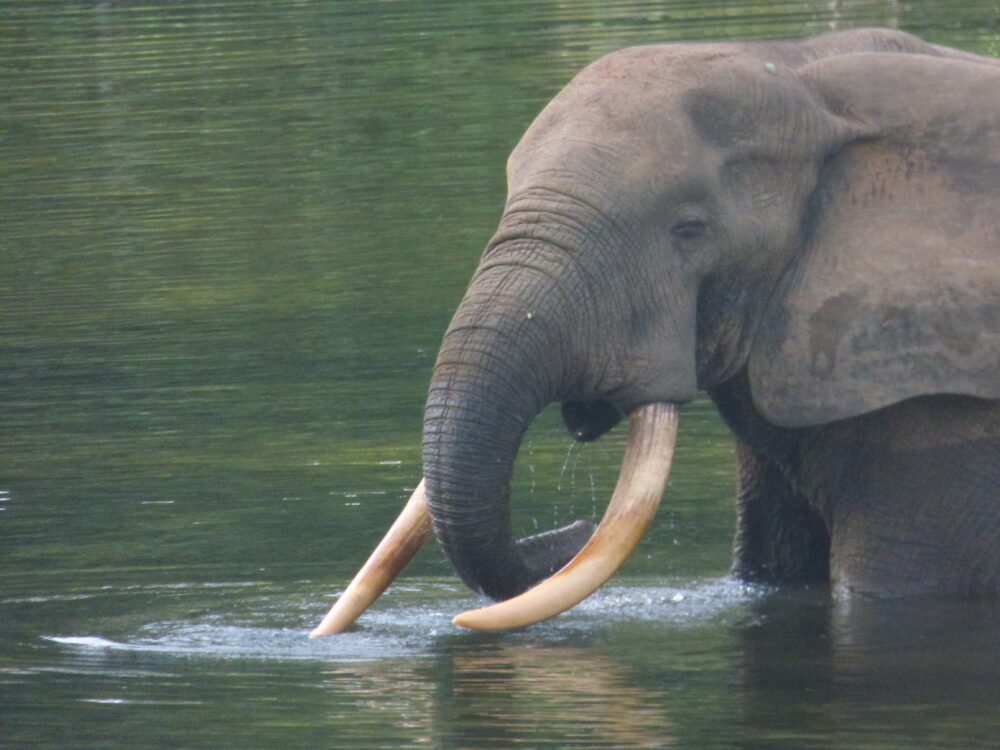There are far more African forest elephants than conservationists previously thought — not because the critically endangered species is recovering, but because scientists are now able to count them more accurately.
There are far more African forest elephants than conservationists previously thought — not because the critically endangered species is recovering, but because scientists are now able to count them more accurately.
Thanks to significant advances in DNA-based survey techniques and expanded monitoring across the species’ range, 94% of all counted African forest elephants are now based on scientifically robust estimates, compared with just 53% in 2016.
The latest findings reveal that the estimated number of forest elephants in areas surveyed between 2016 and 2024 across the continent is 135 690, while an additional 7 728 to 10 990 may be present in areas not systematically surveyed. The entire forest elephant population, including estimates and guesses, may number 145 050 animals.
These results come from the African Forest Elephant Status Report 2024, released this week at the 20th meeting of the Conference of the Parties to the Convention on International Trade in Endangered Species of Wild Fauna and Flora (Cites Cop20) in Samarkand, Uzbekistan.
The report, published by the African Elephant Specialist Group of the International Union for Conservation of Nature (IUCN), represents the first time that African forest elephants (Loxodonta cyclotis) have been assessed independently from their larger cousins, African savanna elephants (Loxodonta africana), following their formal recognition as a distinct species in 2021.
“This report provides the most accurate picture of elusive African forest elephant populations to date,” the director-general of the IUCN, Grethel Aguilar, said in a statement.
“It shows us that conservation action is working for these iconic animals, which are crucial forest ‘gardeners’, essential for tree seed dispersal.”
This new data provides an unprecedented opportunity to focus conservation efforts where they are needed most and give the species a real chance to recover.
But Aguilar and fellow experts warn that the higher numbers should not be confused with a rebound.

“The updated numbers of African forest elephants should not be interpreted as population growth, but rather as the result of improved survey coverage made possible by DNA-based methods,” said Rob Slotow, co-chair of the IUCN SSC African Elephant Specialist Group.
“These techniques have significantly reduced uncertainty in detection estimates and enabled us to assess areas that were previously inaccessible.”
Forest elephants, which occur in 22 countries in Africa, mainly live under the dense canopies of Central Africa’s rainforests in conditions that make them exceptionally difficult to track.
The latest assessment incorporates DNA capture-recapture, which identifies the unique genetic “fingerprints” of individual elephants in dung. By comparing initial “captures” with later “recaptures,” scientists can calculate population size with far greater reliability than earlier approaches allowed.
This method underpinned the recent nationwide survey in Gabon, which substantially increased the estimated number of elephants in the country, and which accounted for much of the 16% rise in global numbers.
Additional surveys in the northern Republic of Congo and Cabinda, Angola, added another 600 to 700 elephants — populations that had never been scientifically assessed before.
The report said that Central Africa remains the epicentre of the species’ survival, characterised by vast tracts of intact tropical forest and relatively low human population density. The region holds just under 95% of all forest elephants. Gabon alone accounts for 66% of the global population.
The Republic of Congo holds 19%, while the remaining Central African states share small but significant populations. West Africa accounts for around 5%, and East and Southern Africa together account for less than 1%.
Across their known and possible range — about 907 830 km² — 74% has been surveyed since 2016. The remaining 26% remains unassessed and is expected to contain elephants at much lower densities.
Their future remains fragile. The report noted how two major landscapes — the Okapi Wildlife Reserve in the Democratic Republic of Congo and the W-Arly-Pendjari complex in Burkina Faso — lost an estimated 7 000 elephants combined.
The IUCN Red List notes that African forest elephants declined by 86% over the 31 years to 2015, primarily driven by poaching and habitat loss.
Their very slow reproductive rate – females typically calve every five to six years — makes recovery particularly difficult.
Although poaching rates have declined in many regions since about 2018–2019, illegal killing for ivory remains widespread, especially in parts of Central and West Africa.
Expanding mining operations, new road and rail infrastructure, logging and large-scale agricultural projects, including palm oil plantations, are fragmenting habitat and pushing elephants into increasingly isolated forest patches. This intensifies human–elephant conflict and can lead to retaliatory killings.
For conservationists, the report’s improved clarity offers both hope and caution.
“We need strengthened anti-poaching measures, better land-use planning for habitat connectivity and sustained international support to turn the cautious hope provided by this report into long-term recovery,” added Benson Okita-Ouma, co-chair of the specialist group.